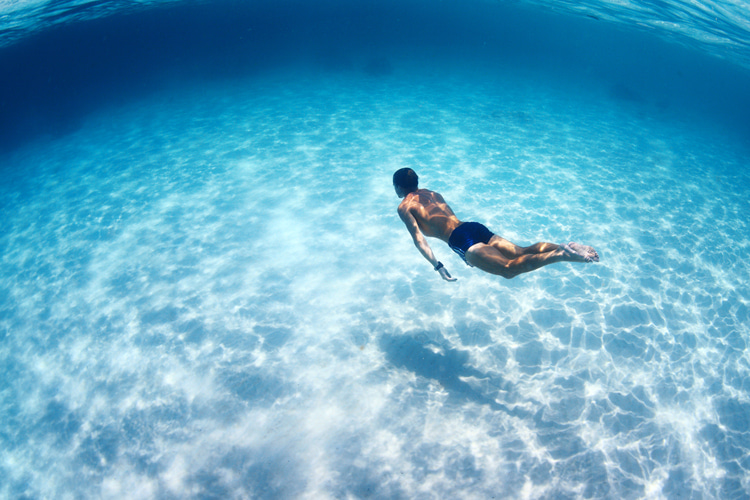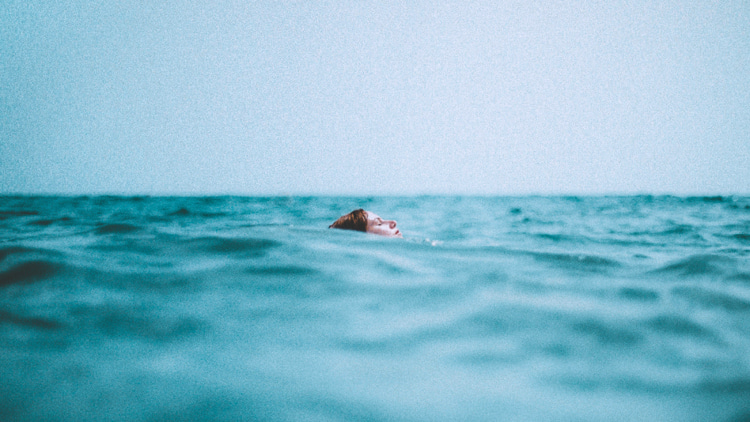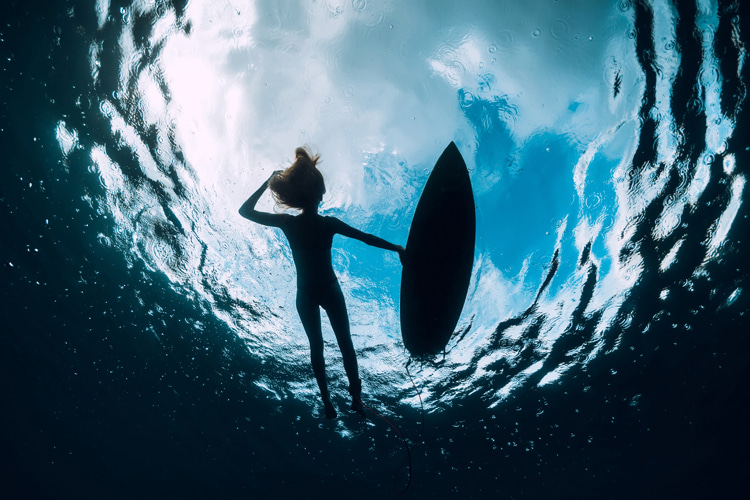The image of a swimmer or surfer effortlessly treading water often conjures feelings of tranquility, perhaps even nostalgia for the idyllic summers of youth.
But behind that serenity, there lies a critical life skill that, when properly mastered, can provide invaluable security and even save lives.
Treading water involves moving your body in a way that helps you stay in one spot in the water, with your head above the surface, without touching the bottom, to avoid drowning.
It's a core survival swimming skill that everyone should know, regardless of whether you're an aspiring Olympian, a surfer, or simply someone who enjoys the occasional beach vacation.
Today, we'll explore in depth the techniques that can make treading water not only possible but efficient and less physically draining.
These tips and tricks are beginner-friendly and suitable for both adults and children who may be new to this water safety essential.

The Lifesaving Power of Treading Water and Floating
Before diving into the practicalities, let's understand why treading water and floating are fundamental.
Water bodies can be unpredictable, and knowing how to stay afloat without any external aid is a vital skill that can make a difference in a hazardous situation.
This skill becomes even more critical in the ocean, where tides, currents, and waves add an additional layer of challenge.
Treading water not only ensures that you can breathe comfortably but also signals to others that you are in control of your situation - a potentially lifesaving aspect if you find yourself in need of rescue.
Moreover, mastering this skill allows you to save energy, providing you with the endurance needed to stay afloat for extended periods.

Mastering the Art of Treading Water: Step-By-Step Instructions
Learning to tread water effectively involves understanding your body's natural buoyancy, regulating your breathing, and adopting the right mindset.
Here's a detailed, step-by-step approach to building your treading water skillset:
1. Adopting the Right Mindset
The first step in treading water is having the right mindset.
Relaxation is key - remember, water is not your enemy.
Stressing or panicking can lead to flailing, which wastes energy and makes it more challenging to stay afloat.
Maintain a positive and calm mindset, confident in the knowledge that your body is naturally buoyant and, with the right movements, can float on water.
2. Correct Posture
To start treading water, position your body upright in the water. Keep your head straight, your back vertical, and your body centered.
Your legs will be doing most of the work to keep you afloat, so keeping your body in a vertical alignment will help to balance your movements and maintain your position in the water.
3. The Eggbeater Kick
The eggbeater kick is a leg movement technique commonly used for treading water.
It's highly energy efficient and is named for its similarity to the motion of an eggbeater.
- Start by bending your knees at a 90-degree angle;
- Next, move your legs in an alternate circular motion, as if drawing circles in the water;
- Your left foot should move clockwise, and your right foot should move counterclockwise;
- Your feet should create resistance against the water, which will help to keep your body afloat;
4. Sculling
Along with the leg movements, your arms also play a crucial role in maintaining your balance and helping to keep your head above water.
A technique called sculling can help:
- Extend your arms out at chest level;
- Keep your palms flat and facing downwards, fingers slightly apart;
- Move your hands in a horizontal figure-8 pattern or a sculling motion;
- This motion creates an upward pressure, which assists in keeping you afloat;
5. Breathing Techniques
Your breathing plays an integral role in staying afloat.
Try to maintain a regular and calm breathing pattern.
Deep, slow breaths will help to keep you relaxed and conserve energy.
Plus, the act of exhaling underwater can contribute to your buoyancy.
Complementary Exercises to Train on the Side
While the actual act of treading water is best learned in the water, there are several exercises you can do on land to strengthen the muscles used in treading water:
1. Leg Lifts
Leg lifts can strengthen your hip flexors and quadriceps, helping to make your kicks more powerful.
- Lie on your back, keeping your legs straight;
- Lift one leg six inches off the ground and hold it there for a few seconds;
- Repeat this with the other leg;
2. Flutter Kicks
This exercise mimics the kicking action used in treading water.
- Lie on your back, lifting your legs slightly off the ground;
- Keep your legs straight and make small, rapid, up-and-down movements;
3. Arm Circles
This simple exercise strengthens your shoulders and improves your endurance for the sculling motion.
- Stand straight and extend your arms to the sides, keeping them at shoulder level;
- Slowly make small circles with your arms, first in a forward direction, then in a backward direction;
By combining these exercises with regular practice in the water, you'll find yourself treading water effortlessly, with confidence and greater efficiency.
Remember to always practice with a buddy or under the supervision of a trained professional. Water safety is crucial at all stages of learning.
Water, with all its refreshing allure, need not be intimidating.
By learning and mastering the art of treading water, you can approach your next aquatic adventure with enhanced confidence and safety.
So, take a deep breath and dive in.
